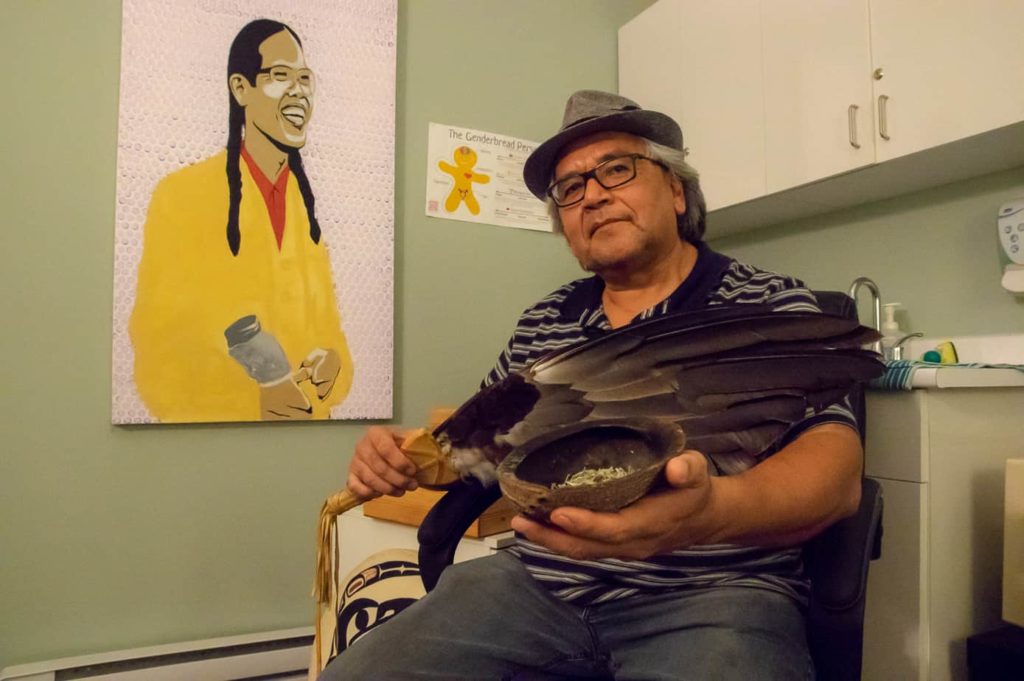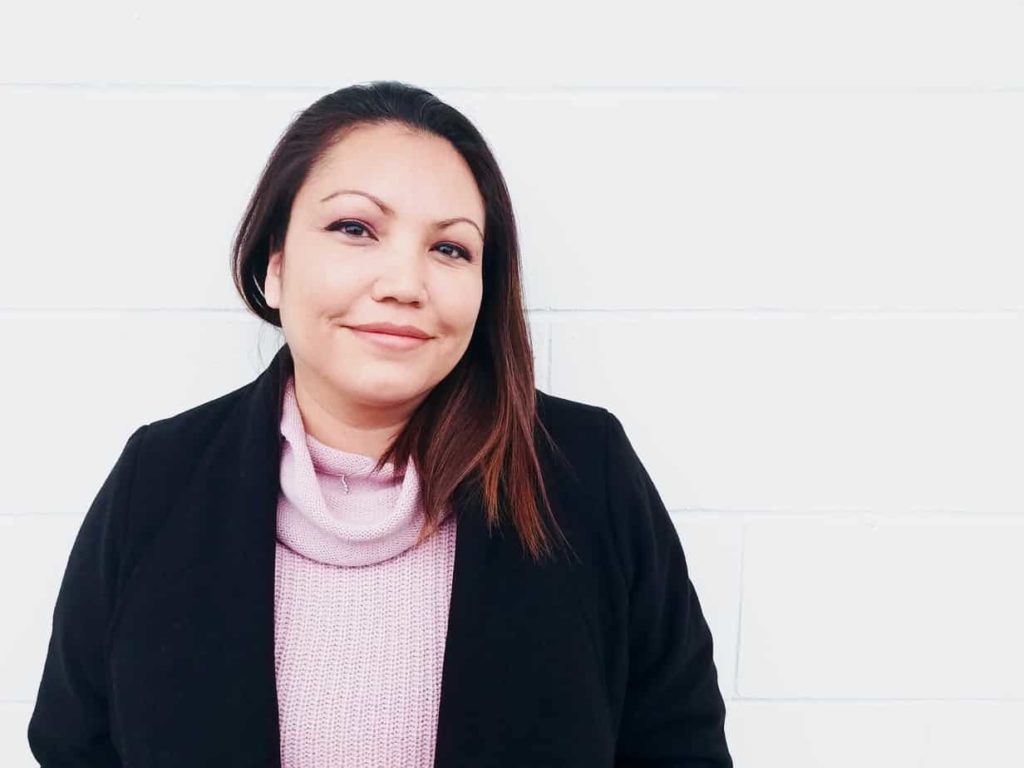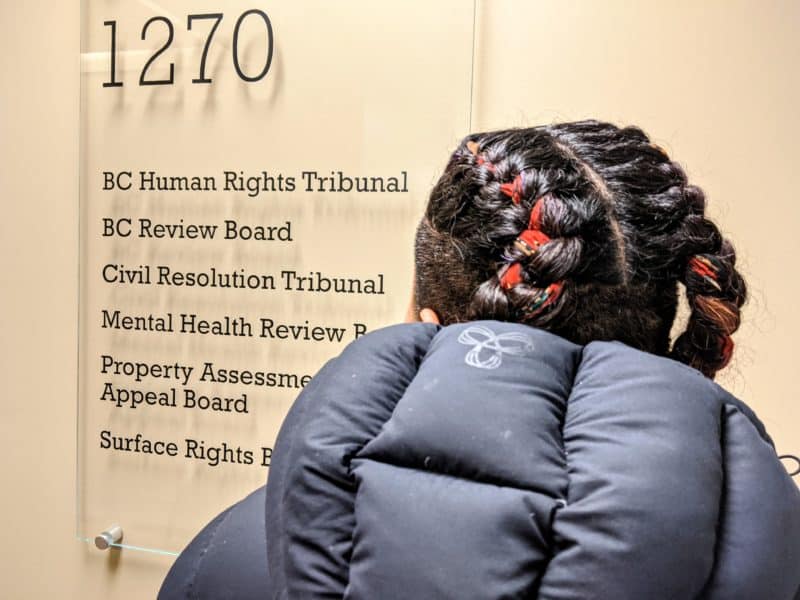
This is from our Urban Nation newsletter. You can subscribe here.
It seems simple to me yet complicated at the same time. There are Indigenous elders and youth in the Lower Mainland, so you’d think they intersect often. But do they? If not, how are elders transferring their knowledge to the youth whose sense of cultural identity they’re meant to help foster? And where does that leave our urban youth?
These questions occurred to me when I interviewed Bethany Sunday Shortt last summer at Britannia Community Centre, where she was working with Indigenous elders. Bethany was featured in my recent story: Elders help urban Indigenous youth connect to culture — if they can find each other.
There are varying definitions of what an elder is, but elders essentially perform the same function in Indigenous cultures: they transfer cultural knowledge to the younger generation that will take over from them after they die. This works in principle, but living in cities poses challenges to this process.
Without their elders to guide them, whose culture and traditions are urban Indigenous youth learning?
It is important for Indigenous youth to learn about their own cultures because that’s the centre of gravity of their cultural identity; it’s who they really are.

With multiple Indigenous cultures on the Lower Mainland, some people fall back on using methods and symbols from other Indigenous cultures as a proxy, until they can link up with their own cultures. I know several Indigenous people who grew up in Vancouver and have never been to their home communities, who respect their proxy culture and traditions as much as anyone, so I can’t disagree with this solution.
But over the years, I’ve been struck by how empty many Indigenous youth feel when they don’t know who they are. It doesn’t surprise me, though. They are victims in the long process of colonization, the social and economic fallout from which caused a diaspora from Indigenous communities to cities. That youth look for something not knowing what it is, tells me that our Indigenous identity is fused into our DNA. We don’t know our ancestors, but they know and will signal us.
I never had cultural identity issues. I moved to Vancouver from Port Alberni as a teen in 1980, but I was fortunate. My uncle Harold Jackie George lived here and we were close. He was my only elder. He taught me about our nation, our culture, and he taught me to think critically. I never got to know my father, who died when I was six. But my uncle taught me about who he was and what he valued and stood for. My uncle died in 2010, and I can’t imagine not having had him as an elder and mentor.
All is not lost for urban Indigenous youth who don’t have their own elders. People such as Bruce Robinson, Blair Goodwill and others do vitally important work serving as surrogate elders to our youth. They are like medics fixing wounds caused by colonialism, only the medicine being used to heal is Indigenous identity. As long as Indigenous people continue teeming into the Lower Mainland, surrogate elders like these are needed.
What you love

“I love coming into Indigenous communities like the Lower Mainland because people are proud of where they’re from,” Bonnie Van Hatten says.
“Many people are from place-based communities that when you ask them where they’re from — you know a cousin there, maybe an auntie, maybe an uncle,” she says.
“We’re such relational people,” she continues, remembering the time she worked on a reconciliation workshop series with Salmon n’ Bannock — only to discover her cousin was working there part-time too.
It’s not uncommon for Bonnie to run into her cousins when she’s doing workshops. She abruptly switched career paths to become a reconciliation educator after she found out her mother went to residential school.
Now she educates Indigenous and non-Indigenous people on the history, policies, stereotypes, hidden biases, power and privilege — and moving towards specific calls to action within organizations.
“There’s lots of different people from the urban communities wondering what they can do to move towards reconciliation,” she says.
“It’s just been amazing to see that the urban population of Indigenous people is moving and shaking and really making a difference towards reconciliation efforts,” she adds.
Would you like to share what you love about being part of the urban Indigenous community? Send your thoughts, contact info and a photo of yourself to brielle@thediscourse.ca. Kindly aim for 150 words or less. We’ll be in touch if we’d like to feature you in an upcoming newsletter.
People are talking about
- The Winnipeg Free Press reports that the city’s Indigenous council on policing and crime is going to be disbanded when its mandate expires at the end of this year.
- The Ubyssey ran this piece about the University of British Columbia partnering with the First Nations House of Learning to update its Indigenous language usage guidelines.
- B.C.’s Representative for Children and Youth released two reports this week: One aims to shine a light on the experience of a family with complex special needs and the “shortcomings of a system that obviously does not have the capacity to offer the depth of services and oversight that are required in such complex cases.” The other is a collaborative report by youth who’ve been through care, led by Melanie Doucet, a PhD candidate at the McGill School of Social Work. The project looks at the importance of supporting meaningful long-term relationships for youth “aging out of care.” Watch her video here.
- Sixties Scoop survivors are being invited to step forward because they may be eligible for $25,000 to $50,000 in compensation as part of a class action lawsuit. According to the Vancouver Sun, an information session will be held in Vancouver on Dec. 17.
- And in this satirical story, police union officials defend an officer who struck a prone Indigenous person.
What makes life harder

Alicia Stephens is a 39-year-old Nuu-chah-nulth artist. She was born and raised in Victoria and now she lives in Burnaby with her husband and their six children. She says the hardest thing about being an urban Indigenous person is fighting the residential school cycle.
“My mom went to residential school. My grandma went to residential school and I am first generation out,” she says. “They were raised in such a cold environment with no affection, no love. They were raised with anger and hatred and lots of really bad stuff. So they struggled with their parenting, on raising their own kids.”
For Alicia, the cycle manifests in alcoholism in her family. She remembers going to AA meetings with her mom as a child. “I’m trying my best to stop it with my kids, and it’s hard.”
“I’ve been sober for six years. Me and my husband, we’re both sober. Our first priority is our children… making sure that they’re okay.”
Together they’re working to start a new cycle, she says.
“We have a strong, loving marriage,” she says. “We try to pass that on to our children by what they see every day and how supportive we are to each other and the kids, [our] dedication to our work. Teaching them to be a strong First Nations person.”
Alicia’s currently working to put together a lineup for a fashion show. Her wearable art, which aims to mix high fashion with First Nations art, will be featured next September in New York. It will be her first show outside Metro Vancouver and her first time to New York. You can see her work here.

Let’s gather
-
Dec. 13: Join B.C.’s attorney general, David Eby, at the Centre for Dialogue at 7 p.m. for a conversation about the opioid crisis and money laundering problems, co-hosted by Global Shapers Vancouver Hub. While general tickets are sold out, youth under 30 are encouraged to register for free.
-
Dec. 14: Federation of BC Youth in Care Networks is hosting its annual holiday open house in New West from 4 to 8 p.m. There will be food, crafts for kids, stockings, a photo booth and a visit from Santa around 6 p.m. RVSP to Shannon.
-
Dec. 15: Buddings Daycare is hosting a Guilt-Free Children’s Market from 2 p.m. to 5 p.m. at Storybook Buddings in East Van where you can make crafts or buy gifts that are “earth-safe” from “eco-friendly businesses.”
If you know about an event that you think should be included in this newsletter next week, send me an email. And if you like this newsletter, help us build this community by inviting your friends to subscribe.[end]



